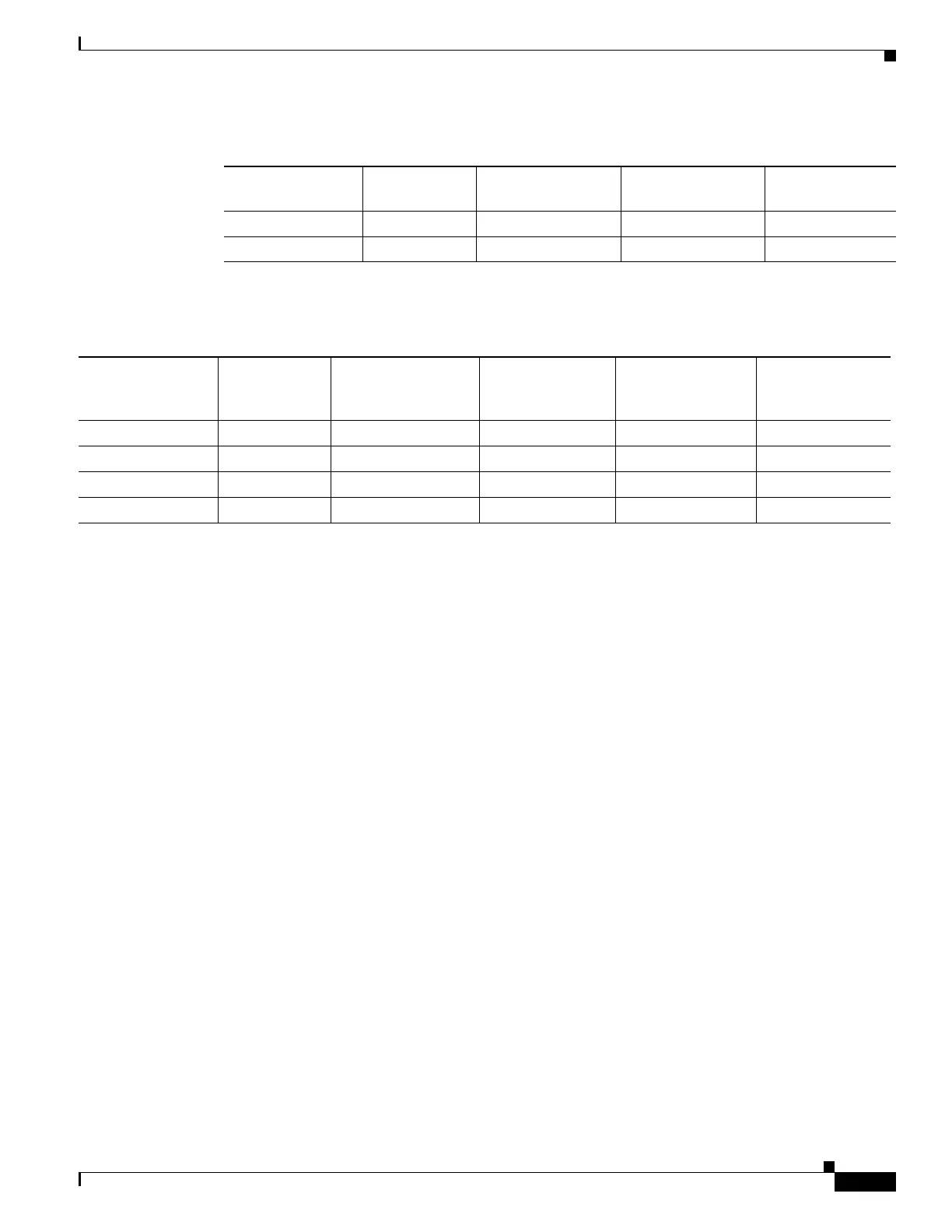1-25
Catalyst 3750-X and 3560-X Switch Software Configuration Guide
OL-25303-03
Chapter 1 Configuring QoS
Configuring Auto-QoS
Table 1-4 shows the generated auto-QoS configuration for the egress queues.
For information about the trusted boundary feature, see the “Configuring a Trusted Boundary to
Ensure Port Security” section on page 39-42.
• When you enable auto-QoS by using the auto qos voip cisco-phone, the auto qos voip
cisco-softphone, or the auto qos voip trust interface configuration command, the switch
automatically generates a QoS configuration based on the traffic type and ingress packet label and
applies the commands listed in Table 1-5 to the port.
Enhanced Auto-QoS for Video, Trust, and Classification
In Cisco IOS Release 12.2(55)SE, auto-QoS is enhanced to support video. Automatic configurations are
generated that classify and trust traffic from Cisco TelePresence systems and Cisco IP cameras.
When you configure the auto qos {video | classify | trust} enhanced commands on a switch port, this
behavior occurs:
• Auto qos voip generated commands that you configured on the interface before Cisco IOS
Release 12.2(55)SE migrate to the enhanced commands.
• Global values change with the migration of enhanced commands. For a complete list of the
generated commands that are applied to the running configuration see Table 1-5.
Auto-QoS Configuration Migration
Auto-QoS configuration migration from legacy auto-QoS to enhanced auto-QoS occurs when:
• A switch is booted with a 12.2(55)SE image and QoS is not enabled.
Any video or voice trust configuration on the interface automatically generates enhanced auto-QoS
commands.
Table 1-3 Auto-QoS Configuration for the Ingress Queues
Ingress Queue Queue Number CoS-to-Queue Map
Queue Weight
(Bandwidth)
Queue (Buffer)
Size
SRR shared 1 0, 1, 2, 3, 6, 7 70 percent 90 percent
Priority 2 4, 5 30 percent 10 percent
Table 1-4 Auto-QoS Configuration for the Egress Queues
Egress Queue Queue Number CoS-to-Queue Map
Queue Weight
(Bandwidth)
Queue (Buffer) Size
for Gigabit-Capable
Ports
Queue (Buffer)
Size for 10/100
Ethernet Ports
Priority 1 4, 5 up to100 percent 25 percent 15 percent
SRR shared 2 2, 3, 6, 7 10 percent 25 percent 25 percent
SRR shared 3 0 60 percent 25 percent 40 percent
SRR shared 4 1 20 percent 25 percent 20 percent

